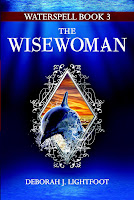I have published my first e-book: SELF-EDITING: Bringing Out Your Best (Two Half Brains Make a Whole Writer). It’s at Smashwords for $0.99 (free until the end of September, using coupon code HF63Y).
Summary: "For writers in all genres, tips and tricks for (partially) computer-aided editing and for invoking the critical faculties of your logical left brain at just the right time. We’ll use the Find feature to locate predictable problems: 'ly' adverbs, overuse of commas, qualifiers that leech the life from writing. Then on to meatier matters of self-editing: eliminating wordiness, changing passive voice to active, when to show and how best to tell (with specifics, not generalities), subtlety, pacing, etc. Drawn from the presenter’s years of experience in newspaper, magazine, and book writing and editing, this e-book offers nuts-and-bolts advice on fixing common errors."
AN EDUCATION IN E-PUBLISHING
From this venture into e-publishing, I’ve learned several things:
It’s really difficult to control the look of an e-book. On my NOOK (in .epub format) my Self-Editing book looks great. All the block quotes and examples are properly indented and set off from the body of the text, and they are in the same size type as for the body, and thus they’re easy to read.
But when the book is viewed in a Web browser (in HTML) the block quotes are rendered in tiny type that’s almost impossible to read.
I can’t control the format that people choose to view, but I can recommend an e-book reader that gives digital books (.epub) a more pleasing configuration:
Adobe Digital Editions (http://www.adobe.com/products/digitaleditions/) is free, it’s easy to use, and it faithfully preserves an e-book’s original formatting (including any clickable, embedded hyperlinks).
ONE DOWN, MORE TO GO
 |
| Cover art copyright (c) 2011 by David R. Davis |
I hope I sell some copies of my new e-book, but my primary purpose is to get experience with the Smashwords.com publishing interface so I’ll feel confident about publishing FOUR STAR FUNERALS, an anthology written by the members of my critique group. They are counting on me to get it right, and I’m finding that this e-publishing business can be simple (when you’re publishing your own work) but complicated when you’re acting as the publisher for other writers.
Smashwords offers a wordy document that purports to explain the process of “upgrading” to Publisher status. What it says about “ghost” accounts baffles me.
It also warns me: “DO NOT upgrade your account to Publisher status unless you plan to immediately publish two or more authors on Smashwords.”
Well, darn. That means I don’t get to practice it before I actually do it.
I shall persevere, however. This isn’t rocket science.
For now, I must settle down with the manuscript of FOUR STAR FUNERALS and reread my contributions to the anthology. It’s always best to proofread before publishing.
THANKS TO DAVID R. DAVIS
My thanks to David Davis for both covers: my SELF-EDITING book, and our collective FOUR STAR FUNERALS. I have no idea how to create e-book covers. I’m lucky to be able to call on David’s artistic talents.





